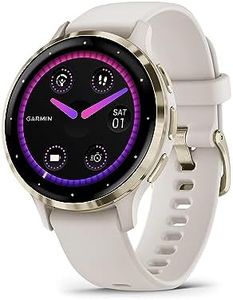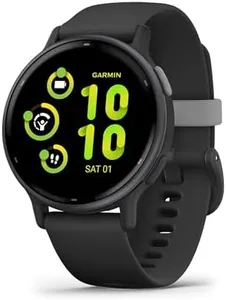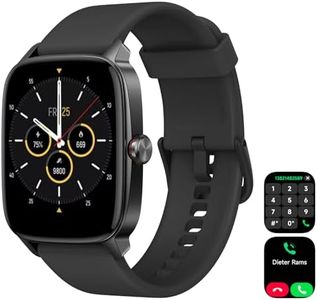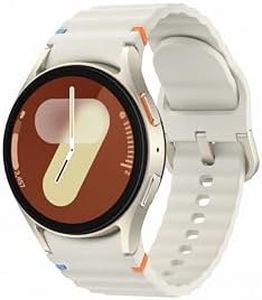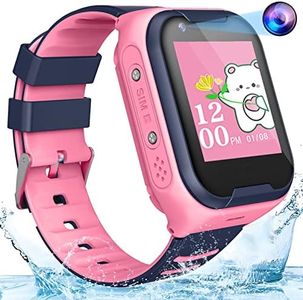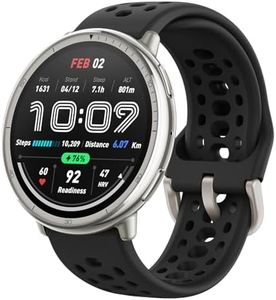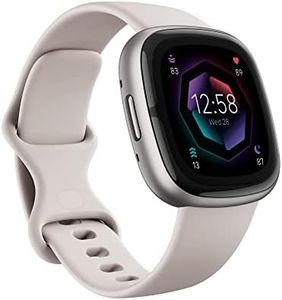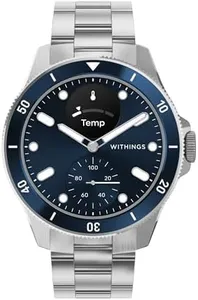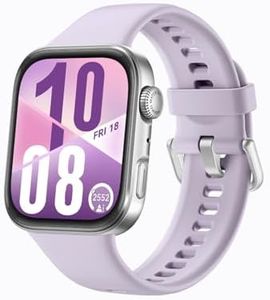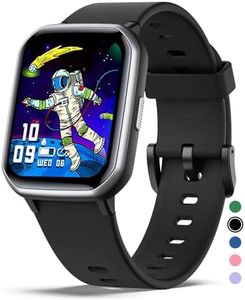We Use CookiesWe use cookies to enhance the security, performance,
functionality and for analytical and promotional activities. By continuing to browse this site you
are agreeing to our privacy policy
10 Best Smart Watch Phone
From leading brands and best sellers available on the web.Buying Guide for the Best Smart Watch Phone
Choosing a smart watch phone is all about matching your lifestyle, needs, and preferences with the right features. These devices combine the convenience of a smartwatch with the communication features of a phone, offering you more freedom and functionality on your wrist. Before settling on a model, consider how you intend to use it: for fitness, work, travel, or as an everyday extension of your phone. Understanding core specifications will help you narrow down your choices and find the best match for your daily routine.DisplayThe display is the screen you interact with on your smart watch phone, and it's important because it affects usability, visibility, and overall experience. Displays usually come in different sizes and types such as LCD, AMOLED, or e-ink. Smaller screens (around 1.2 inches) make for a more discreet watch but may be harder to read, while larger screens (up to 2 inches) offer easier navigation and better visibility, especially for reading messages or viewing notifications. Brightness and resolution also matter, especially if you spend time outdoors where sunlight can make screens hard to see. Pick a display size and brightness that suits your wrist size and eyesight, and consider where you'll be using the watch most often.
Operating System CompatibilityThis determines how well your smart watch phone works with your smartphone and which apps or features you can use. The most common systems are Wear OS, watchOS, and other proprietary platforms. Some smart watch phones only work with certain types of smartphones—like Android or iOS. If you want to use your watch phone for calls, messages, and apps, double-check that it's compatible with your existing phone. Your choice here is guided by the smartphone you already use and the apps you rely on.
Cellular ConnectivityCellular connectivity refers to whether the watch can connect to mobile networks (like 4G or 5G) and operate independently of your phone. Some watches allow you to make calls, send texts, and access data services without being tethered to your smartphone, while others require a phone nearby via Bluetooth. If you need your watch phone for standalone communication, look for models with SIM card slots or eSIM support. For users who want to leave their phone behind during workouts, travels, or quick errands, strong cellular connectivity is key. Otherwise, Bluetooth-only models may be sufficient for those who always carry their phone.
Battery LifeBattery life indicates how long the device can operate before needing a recharge. It varies depending on usage and features—watches with more powerful processors, large displays, or always-on connectivity tend to last less than simpler models. Some smart watch phones offer one to two days per charge, while basic ones can stretch several days. If you rely on features like constant GPS, calling, or regular fitness tracking, aim for longer battery life to avoid mid-day charging. Light users, or those who charge nightly, may be comfortable with shorter battery cycles.
Health and Fitness FeaturesHealth and fitness tracking can include heart rate monitoring, step counting, sleep tracking, GPS activity logging, and sometimes more advanced sensors like blood oxygen. Depending on your activity level and health goals, you may want a watch phone with robust tracking capabilities or just basic metrics. If you're into exercise or outdoor activities, look for options with built-in GPS and waterproofing. For everyday wellness, step counting and heart rate tracking may be enough.
Durability and Water ResistanceDurability covers how well the watch resists daily wear and tear, while water resistance measures whether it can survive splashes, rain, or even swimming. Some watches are only splash-proof, suitable for hand washing and rain, while others are swim-proof or dive-rated. If you plan to use your watch phone during sports, outdoor adventures, or in wet environments, opt for higher water and dust resistance. Otherwise, basic durability is usually enough for general daily use.
Storage and PerformanceStorage capacity on a smart watch phone determines how many apps, songs, or files you can keep on the device. Performance relates to how smoothly the watch operates, especially when running multiple apps or handling voice commands. Basic users who rely on notifications and simple apps don't need much storage or top-tier processors. However, if you like music on the go, download many apps, or use your device for voice calls and multitasking, prioritize more internal storage and a faster processor.
App Ecosystem and CustomizationThe app ecosystem refers to which apps you can install and how customizable the watch is to your preferences. Some platforms offer a wide variety of apps for fitness, messaging, travel, productivity, and more, while others have fewer options. If you rely on specific apps or want to personalize your watch face and experience, pick a model with a large app store and ample customization options. If you only need standard features, a simpler ecosystem may suffice.
